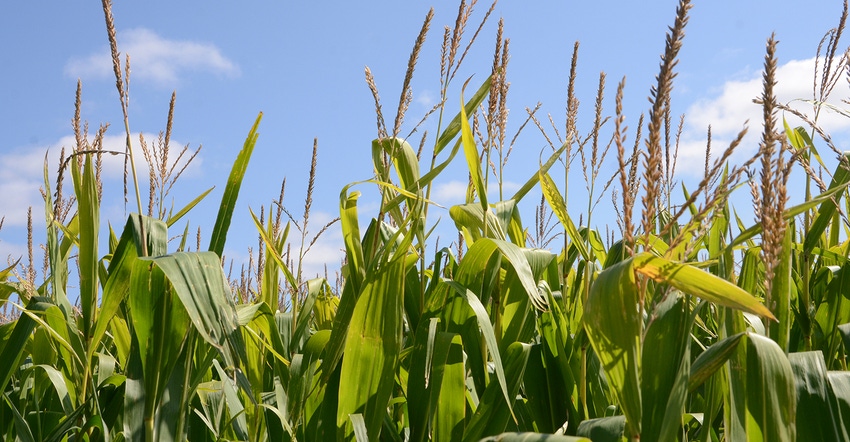June 8, 2018

The offices of the National Corn Growers Association are a great place to learn about one of the nation’s top crops. What might surprise farmers, however, is that potential buyers of corn-based products have a lot of questions. Will there be enough corn? Can corn producers ramp up supply in the long term? What about corn’s environmental footprint? And aren’t new uses taking away food from consumers?
These questions all have answers; the challenge is getting the word out. Chris Novac, NCGA CEO, says when talk of sustainability comes up, some farmers will say, “That’s just feel-good work.”
“My answer is that we’ve heard of product manufacturers saying that they’re not certain they want to use corn,” Novak says.
He points to those very questions about food versus fuel, sustainability, and what he notes is the annual report on the Gulf of Mexico with the National Oceanic and Atmospheric Administration’s report on hypoxia in the region. “When you have companies and individuals who are hearing and reading those types of stories, they’ll start asking questions about the sustainability of corn,” he says.
He noted that there’s an important story to tell in terms of energy, calories produced per acre today versus 50 years ago, and the farming techniques farmers are using. Add in the benefits that biotechnology has brought so far, including the shift to no-till and minimum till, and corn has a good story to tell.
Here’s a point to share with friends: Ethanol reduces greenhouse gas emissions by 48% versus fossil fuels. “If we added changes to farming practices, including more cover crops and increasing conservation tillage, that number moves to a 76% reduction,” Novak says.
Answering those big questions with stats like reduced greenhouse gas emissions, less nitrogen per bushel of corn produced, and reduced fuel per acre with lower tillage will make a difference. NCGA works to communicate these facts, because it matters in the effort to find “the next ethanol.”
No magic bullet
When farmers talk about corn prices and the related issue of corn demand, many talk about what ethanol has done for the industry. Producing 15 billion gallons of ethanol has taken up to 5 billion bushels in corn, boosting overall demand for the crop. And farmers have stepped up to meet the growing demand. But what’s next?
First, the industry must answer potential future buyers’ questions about corn’s sustainability, and explain that the corn used for these new products isn’t the same tasty sweet corn that consumers are buying at the local farmers market.
Second, the industry must find new ways to use corn. Earlier this year, NCGA announced the winners of the Consider Corn Challenge. This program awarded $150,000 to six innovative ideas. While none of these new ideas is yet in the market, each has the potential to boost corn demand significantly if commercial production can be ramped up.
The key is that corn producers can keep up with rising demand, answering a potential buyer’s question about supply in case a new idea takes off.
Jim Bauman, director of market development at NCGA, says what customers should know is that “corn is a reliable, economically competitive, sustainably produced feedstock.” That reliable supply includes the fact that there has been consistent yield improvement year over year, and that the supply has exceeded total demand every year for the past 25 years.
Finding new uses
As for the Consider Corn Challenge, there’s one common link for most of the winners: plastic. In each case, the projects recognized involve taking the sugar or cellulose in corn and using it in a process where petrochemicals are being used now — from soda bottles to other fibers.
But creating a demand generator like ethanol is no easy task. “Look how long it took to develop the ethanol market,” Bauman says.
The challenge was aimed at identifying market lifters that could boost corn demand incrementally. The program drew 33 submissions from eight countries. Included were a wide range of polymers, chemicals and high-end products. One differentiating rule was that the products had to represent an incremental increase in corn demand.
“We aren’t looking for a product that will replace demand for corn with a new product; we wanted additional demand, and that was one factor that decided the finalists,” Bauman says. He adds that in this challenge, there were no food ideas — these were commercial or industrial uses for corn. The next challenge could offer some potential for food uses for corn, but industrial uses for the components of corn — starches, sugars and cellulose — have potential for that incremental boost in demand.
The Consider Corn Challenge honorees can be found by searching “consider corn challenge.” One example: Lygos, a Berkeley, Calif., company, is working on a way to make malonic acid, widely used in coatings and electronics, in a friendlier way. Currently, this acid is produced through an expensive process using hazardous chemicals. Lygos has created a way to make bio-malonic acid from renewable sugar using cutting-edge biotechnology.
The organizations identified in the challenge are still in the early stages of development. The next step is to set up pilot plants near key component supplies to verify their processes on a larger scale. That’s the first step toward commercialization. It will be some time before such a product, if it goes commercial, impacts corn demand. But the process must start somewhere.
About the Author(s)
You May Also Like






